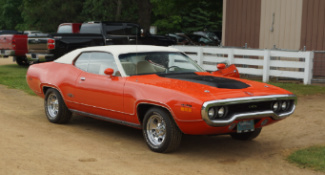Saturn operated from 1985 until 2010. The company described itself as a "different kind of car company." For the entire life of the company, the Saturn brand was a subsidiary of General Motors. However, unlike many of GM's brands, Saturn operated somewhat independently through much of its life.
Formation and Expansion of Saturn
Before the founding of the Saturn Corporation in 1985, General Motors used the name as a code for a new small car project. The origins of Saturn date back to 1982. A concept car was designed between 1983 and 1984 when it was expected the vehicle would wear a badge from another GM brand such as Chevrolet or Buick. However, GM decided to create an entirely new brand instead.
Saturn Corporation was initially owned by employees of the company, along with former members of General Motors management. GM would later buy out the employee ownership shares to make it a wholly-owned subsidiary.
Saturn's first retail models were released in 1990. These were the 1991 Saturn SC coupe and Saturn SL sedan lines. Two years later, the Saturn SW model was introduced.
A red Saturn SL2 was the first Saturn ever produced.
While Saturn updated the S-Series in the mid-'90s and early 2000s, it didn't release a completely new car until the 2000 Saturn L-Series. The midsize sedan and wagon were built in a different GM factory and based on a European-market design.
For 2002, Saturn released its first sport-utility vehicle, the VUE, the third vehicle line and built to compete with the Honda CR-V and Toyota RAV4.
The Saturn Ion replaced the S-Series sedans the next year. The Ion itself was replaced five years later by the Astra, imported from Europe. In 2006, the Saturn Sky convertible was added to the company's inventory.
In 2004, after the company was fully absorbed into the GM corporate structure, Saturn began releasing models based on universal GM vehicle designs. Such models included the Relay minivan, the Aura midsize sedan, and the Outlook SUV.
Operations and Retailer Network
Saturn vehicles were initially manufactured in a dedicated factory in Spring Hill, Tennessee. The assembly plant operated separately from other General Motors plants. Many other GM plants played a role in assembling vehicles for many different GM brands. For example, a plant might produce Chevrolets, GMCs, or even Cadillacs together. The Spring Hill plant produced only Saturns. Until the last half-decade of its existence, Saturn vehicles were designed independently of shared GM platforms.
New Saturns in the U.S. were also sold at Saturn-only dealerships. That required a new network of dealers built instead of merely shipping Saturns to existing GM dealers. The first Saturn dealership opened in Memphis, Tennessee.
Sales of Saturn vehicles did not meet expectations. However, the company did quickly achieve a market share in the United States and Canada. That was helped by marketing campaigns that focused on the vehicles' low price and the fact the company was employee-owned.
Another factor was the company's no-haggle pricing structure – buyers paid the price posted by the dealer, eliminating the dreaded negotiation over sticker.
Saturn vehicles later were introduced into the Japanese market, with right-hand-drive vehicles also being produced at the Spring Hill plant. But sales in Japan were underwhelming. That was due in part to a weak Japanese economy at the time. The company also faced stiff competition from domestic automakers, such as Honda and Toyota.
Closure of Saturn Corporation
From the beginning, Saturn's business model was perceived as questionable. The first models took longer to start production than initially announced. General Motors spent around $5 billion to begin operations. That included designing unique models, hiring a new workforce and building an entirely new manufacturing plant. Additionally, while most Saturn dealers were franchised, setting up the network of dealers was a considerable expense.
Even after production started, Saturn had higher operating costs than its most direct competitors, such as Ford and Honda. Additionally, many new Saturn owners purchased Saturns instead of other GM brands like Chevy and Pontiac. For General Motors itself, Saturn did not help keep its overall market share growing.
As its market share collapsed and the 2008 financial crisis worsened, General Motors decided to focus on its four core brands, Chevy, Buick, Cadillac and GMC. As part of this narrowed focus, the corporation sought to sell Saturn, along with Hummer and Saab, and discontinue Pontiac. By 2009, GM indicated that if it could not sell the Saturn division, it would be discontinued.
Penske Automotive Group reached an agreement to purchase the Saturn brand from GM. The sale would not include the manufacturing plant. While negotiations with Penske were still ongoing, Saturn dealerships in North America began closing.
Penske withdrew from the sale agreement in September 2009. The company claimed it could not find a new manufacturing company to make vehicles under the Saturn brand. GM then announced that it would discontinue the Saturn brand in 2010 and that all Saturn dealerships would be closed by the end of October that year. The company offered existing Saturn owners a rebate to purchase other new vehicles by GM. The company also added Saturn service centers to many Chevrolet and Cadillac dealers to help maintain vehicles under warranty.
The final Saturn cars sold to consumers were produced in 2009. Limited numbers of Aura, Outlook and Vue were made in 2010 and sold only to rental car companies.
Lasting Impact of Saturn Cars
While Saturn only sold cars for 20 years, the company did leave a mark on the industry. Perhaps the most significant impact was the company's no-haggle sales process, which many consumers preferred over car buying at traditional dealerships. Many other new car dealers adopted the company's open pricing approach.
The company also altered the approach of how American automakers competed with foreign automakers, especially companies from Japan. From its beginnings, Saturn often tried to position itself as on par with import vehicles from makers such as Honda and Nissan. That differed from marketing campaigns from Ford and Chevy at the time
Some of Saturn's unique engineering designs have also outlasted the company. Design elements have continued to newer models of GM vehicles manufactured under other brands. Lastly, the Saturn Vue was rebranded, almost unchanged, as the Chevrolet Captiva Sport in 2012.
Saturn's rise and fall was an example of how difficult it is for an independent company to make it in a field dominated by mega-corporations. That is true even if, like Saturn, the autonomous division is owned by one of the global car companies.


